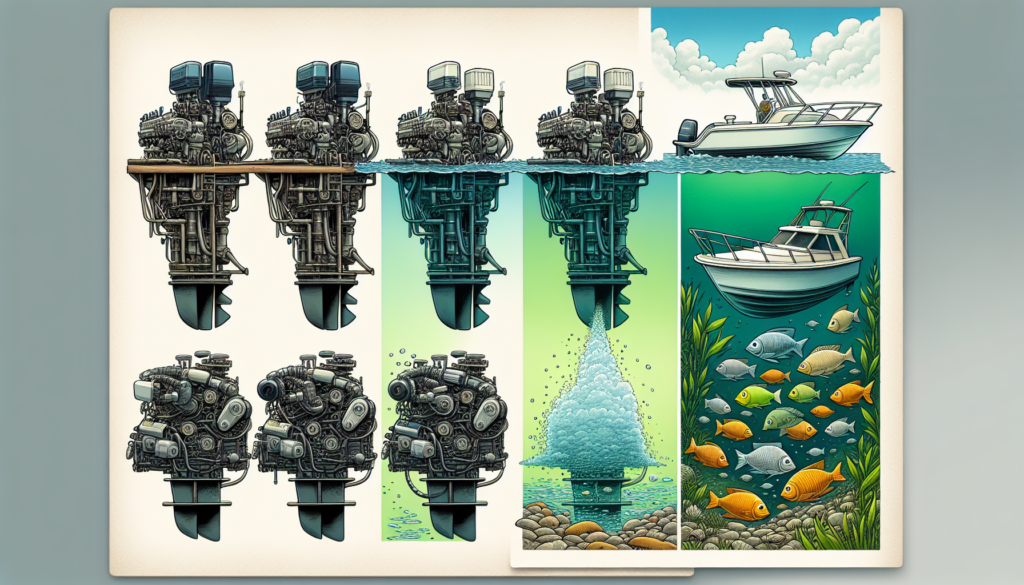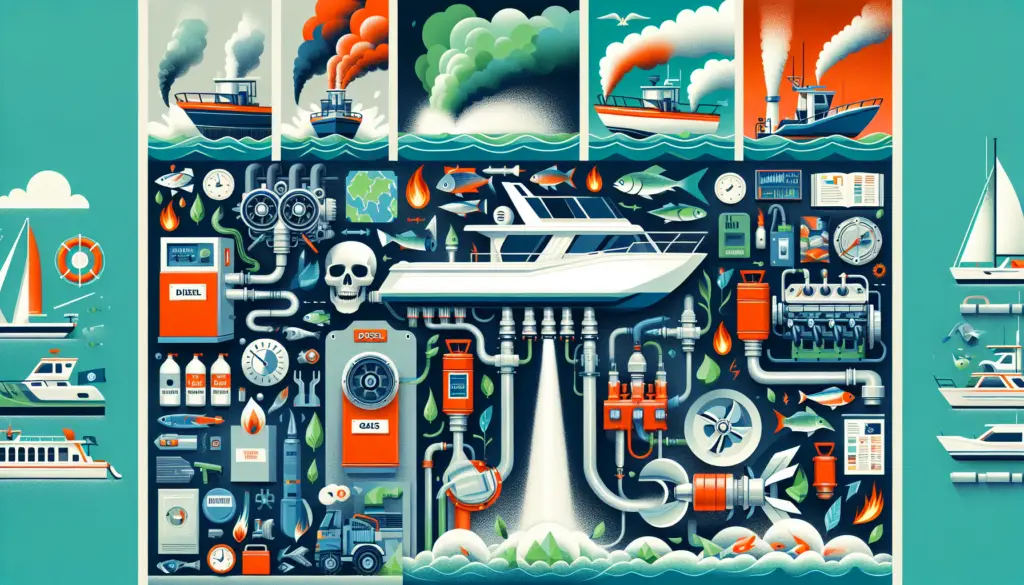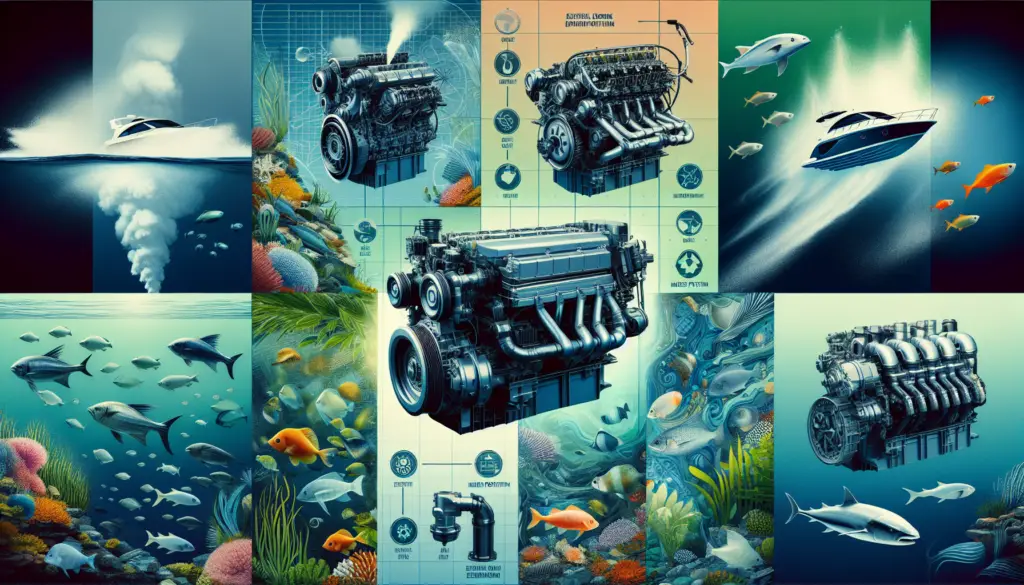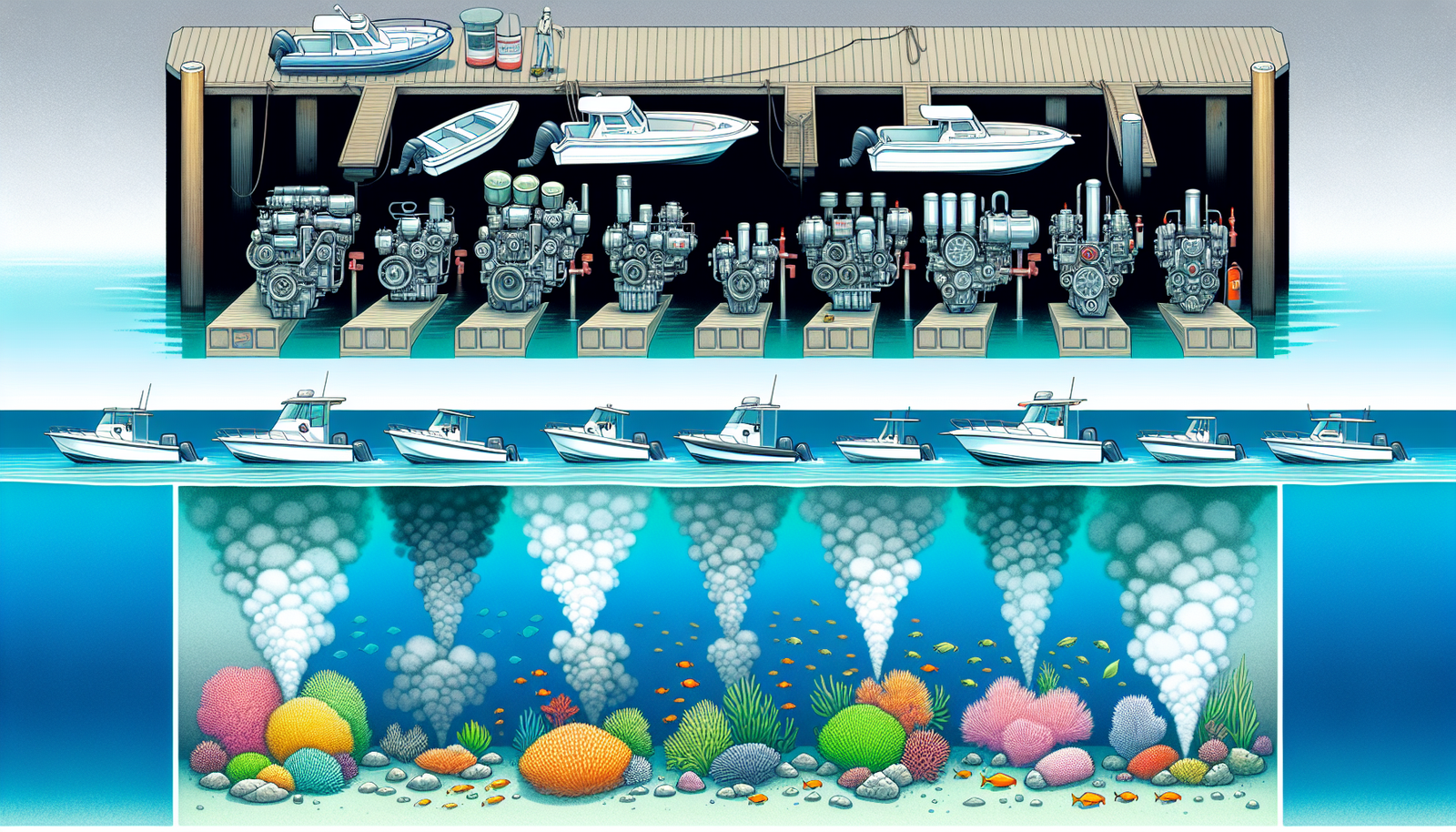As you chart your course across blue waters, you probably aren’t giving too much thought to the under-the-hood workings of your boat, especially when the sun’s shining and the fish are biting. Let’s take some time to consider the different types of boat engines and their impact on the environment. Your choice of boat engine, be it an outboard, inboard, stern drive, or jet drive, can have significant effects on the marine ecosystem. We’re about to bring all of these behind the scenes actions to light. So prepare to embark on a journey that may add a new dimension to your boating experience, making it more environment-friendly.
Understanding the Different Boat Engine Types
When it comes to boating, one often has to make several choices, from the right type of boat to the right kind of engine. Understanding the different types of boat engines is critical, as each type has its unique characteristics, benefits, and drawbacks.
Outboard Engines
Outboard engines are the most common type of engine seen in smaller recreational boats. Attached to the outside of the boat, this engine type efficiently propels a boat through the water and is known for easy handling and maintenance. However, it’s essential to remember that outboard engines can contribute to noise, air, and water pollution.
Inboard Engines
Inboard engines are built inside the boat. Unlike outboard engines, they offer a permanent propulsion system for larger vessels such as yachts and commercial boats. These engines have a quiet operation and higher fuel efficiency. Nevertheless, they also have an environmental impact, particularly concerning emissions and potential water pollution.
Sterndrive Engines
Combining the best of inboard and outboard engines, sterndrive engines are popular choice for medium-sized and larger recreational boats. Anthese engines offer greater maneuverability and a more balanced boat due to their position at the stern of the vessel. Despite their benefits, like inboard and outboard engines, sterndrive engines too have their environmental consequences.
Jet Engines
Jet engines, which can be seen in personal watercraft such as jet skis and some types of speed boats, differ from the conventional propeller systems. They draw in water at the boat’s bottom and eject it out in a high-speed stream providing the thrust to propel the boat forward. While these engines are widely appreciated for their incredible speed and shallow draft, they contribute their share of environmental impact.
Impact of Outboard Engines on the Environment
As mentioned earlier, all boat engines come with a certain level of environmental footprint. When it comes to outboard engines, there are several concerns to consider.
Emissions from Outboard Engines
Foremost are the emissions caused by outboard engines. These engines, particularly older models, are known to be high emitters of carbon monoxide and unburned hydrocarbons, contributing significantly to air pollution. This is because the unburned fuel gets expelled directly into the environment due to inefficient combustion.
Noise Pollution caused by Outboard Engines
Then there’s the issue of noise pollution. Outboard engines, known for their distinct roar, can create excessive noise pollution that can disturb both marine and terrestrial wildlife. The high-frequency noise can disorient marine animals, interfering with their communication and navigation behaviors.
Water Pollution caused by Outboard Engines
Outboard engines, especially two-stroke versions, can also lead to water pollution. The direct spill of unburned fuel and oil during the combustion process often pollutes the water bodies, posing a threat to marine life.

Environmental Ramifications of Inboard Engines
Inboard engines, being larger and providing powerful thrust, are not without environmental implications, from emissions to noise pollution to water pollution.
Emission Levels of Inboard Engines
Despite their higher fuel efficiency, inboard engines, especially those running on diesel, emit a considerable amount of carbon monoxide, soot, and nitrogen oxide gases. These emissions not only contribute to atmospheric pollution but also can have detrimental effects on health and climate change.
Noise Production of Inboard Engines
In terms of noise production, inboard engines might be quieter than their outboard counterparts. However, the noise they generate, albeit lower, can still contribute to noise pollution, impacting marine life significantly.
Water Pollution Risk with Inboard Engines
Inboard engines, though advanced in design, are potential sources of water pollution. Leaks in the system can introduce harmful substances like oil, metals, and coolants into the water, disrupting aquatic ecosystems.
Sterndrive Engines and their Environmental Consequences
Sterndrive engines, often seen as the hybrid option, have their own set of environmental pitfalls, ranging from emissions to noise to water pollution.
Gaseous Emissions from Sterndrive Engines
Sterndrive engines also emit carbon dioxide and hydrocarbons into the atmosphere. Most sterndrive boat engines are gasoline-fueled and alarmingly contribute to the overall carbon footprint.
Noise Pollution as a Result of Sterndrive Engines
While sterndrive engines are quieter compared to outboard engines, they still generate noise that can contribute to noise pollution in marine environments.
Potential for Water Contamination by Sterndrive Engines
Given their structure and the fluids involved in their operation, sterndrive engines pose a risk for water contamination. The engine coolant and lubricants, if not correctly managed, can leak into the water, leading to potential pollution.

Environmental Impact of Jet Engines
Jet engines, although quite different from inboard, outboard, and sterndrive boat engines, significantly impact the environment.
Jet Engines and Air Pollution
Jet engines emit significant quantities of carbon dioxide and water vapor amongst other gases, contributing significantly to global air pollution.
Noise Pollution from Jet Engines
Noise produced by jet engines is significant and can be a serious source of stress for marine and coastal wildlife. The high-intensity noise can disrupt natural behavior patterns in animals.
Risk of Water Contamination by Jet Engines
Jet engines come with their own water pollution risks. Leakages of engine oils, antifreeze, and other harmful substances can cause significant water contamination, putting marine life at risk.
Comparing the Environmental Impact of Various Engine Types
When measuring the environmental impact of different boat engine types, looking at emission levels, noise production, and potential water pollution is crucial.
Comparison of Emission Levels
All four types of boat engines emit some level of carbon dioxide, nitrogen oxide, and other harmful gases. However, older outboard engines and inboard engines can often produce higher emission levels compared to sterndrive and jet engines.
Comparison of Noise Production
Outboard engines tend to produce the highest levels of noise followed by jet, sterndrive, and then inboard engines. Nonetheless, all four engine types contribute to noise pollution to varying degrees.
Potential Water Pollution across Different Engine Types
Considering possible water pollution, outboard engines, in particular older, two-stroke models, and inboard engines may pose the most significant risk. However, all engine types, including sterndrive and jet engines, have the potential to contaminate water through leaks and spills.

Advancements in Eco-Friendly Engine Design
Despite these environmental concerns, there are advancements in engine design that strive to mitigate the environmental impact.
Emerging Trends in Sustainable Engine Designs
Innovations in engine design are being developed with an eco-friendly focus. Battery-powered electric engines, for example, are gaining attention due to their lower emissions and quieter operation.
Future of Eco-friendly Outboard Engines
Manufacturers are working on more efficient and less polluting outboard engines that ensure less fuel is wasted and ultimately reduce emissions. Four-stroke engines and direct fuel-injection two-stroke engines are examples of this.
Evolution of Inboard Engines towards Sustainability
Inboard engines are also heading towards sustainability. Developments in emission control technology and fuel efficiency have led to engines that release fewer pollutants in the environment.
Eco-considerations in Sterndrive and Jet Engines
Manufacturers of sterndrive and jet engines are also pushing towards eco-friendly models. These engines are becoming more fuel-efficient, and measures are being enforced to minimize the risk of leaks and spills.
Influence of Maintenance on Environmental Impact
One must note that maintenance influences the environmental impact of engines.
Proper Maintenance and Emission Reduction
Proper and regular maintenance of engines can significantly reduce emissions. Clean and well-maintained engines run more efficiently and are less likely to release harmful gases.
Mitigating Noise Pollution through Regular Servicing
Regular servicing and upkeep can also help in minimizing noise pollution. Ensuring that engines are operating smoothly and parts are not worn out or damaged can help reduce the noise they produce.
Preventing Water Pollution through Regular Engine Check-ups
Routine check-ups of the engine can prevent leakage and spills, thereby reducing potential water pollution. This includes frequently monitoring and replacing fluids as necessary.

Impact of Engine Efficiency on the Environment
Lastly, engine efficiency itself plays a direct role in the environmental impact.
Relationship between Engine Efficiency and Emissions
The more efficient an engine, the less fuel it tends to waste, which translates into fewer emissions. Upgrading to more efficient engines is one concrete step towards lowering your environmental footprint.
Engine Efficiency and Noise Pollution
Engine efficiency also has considerable effect on noise pollution. Efficient engines tend to operate more quietly than less efficient ones reducing noise levels.
Engine Efficiency Reducing Risk of Water Contamination
Highly efficient engines are less likely to leak and spill harmful substances, thereby preventing potential water contamination.
Conclusion: Choosing the Right Boat Engine for the Environment
Balancing Engine Performance and Environmental Impact
When choosing a boat engine, one has to balance engine performance with environmental impact. Opting for engines that leverage the latest in eco-friendly technologies and designs, while also delivering satisfactory performance, is the best solution.
The Role of Consumers in Promoting Eco-friendly Boat Engines
As consumers, you can play a significant role in promoting eco-friendly boat engines. By opting for sustainable models and conducting regular maintenance, you can contribute to preserving the environment while enjoying the boating experience. After all, maintaining the pristine nature of our waterways is as crucial as the excitement and adventure of boating itself.

